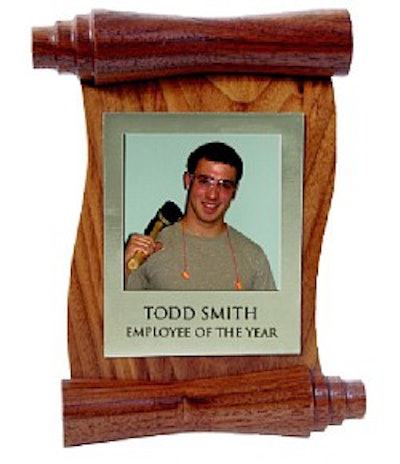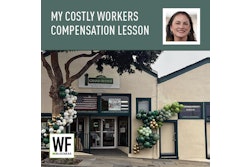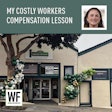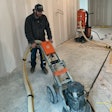

Tom recently formed his own wood flooring contracting company and didn't have much capital to attract some of the more experienced workers in the business, so he took on a novice helper. However, after only a few days, Tom's helper quit, forcing Tom to replace him, and Tom found himself in the same situation again a couple of months later. He soon discovered continually hiring employees was costing him more than if he had hired someone for more money who enjoyed the work and would stay with the job.
What personal characteristic makes the best hire? Until recently, most employers would place their bets on competency, or the command of needed skills. In today's marketplace, however, employers are looking for candidates who can not only perform defined duties but also make a real bottom-line impact. Enter the "A" player. The "A" stands for "Attitude."
The change in emphasis comes at a time when many businesses are finding revenue increases elusive as customers hold their wallets tight in the face of an uncertain future. Employers see the performance of the "A" player, along with improved technology, as a way to wring more productivity out of a stable workforce.
"This economy is highly competitive, and all indications are that the competition will get tougher," says Bradford D. Smart, president of Chicago-based consulting firm Smart & Associates and author of Topgrading. " 'A' players are high performers, and any company satisfied with less-than-high performers is vulnerable to its competition."
Just how can "A" players help fatten your bottom line? Largely through the way they interact with your current customers. "There are only three ways to increase business," says Mel Kleiman, president of the Westwood, Mass.-based consulting firm Humetrics and author of Hire Tough, Manage Easy. "Two of the methods—attracting new customers and raising prices—can be problematic. But 'A' players can help with the third: Selling more to current customers."
If your business can be helped by "A" players, how can you go about getting them? Kleiman says these five questions can get your hiring engine on the right track:
1) Can you identify the "A" player job applicant?
Do you know what an "A" player looks like? We're not talking physical attributes here, but personality traits. "Sufficient strength and intelligence to do the job are of course vital," Kleiman says. "But much more important is attitude. Start by identifying the attitude that marks an 'A' player. Then you will know what to look for in applicants."
Attitude encompasses everything that the candidate feels about work. Does the person view a job as more than a place to put in eight hours and collect a paycheck? Enjoy going above and beyond assigned duties. Look for ways to enhance customer relations?
Knowing the attitude you want is one thing, Kleiman cautions. Identifying it in a potential hire is another. Develop questions in your interview process that will reveal the real attitude of the applicant toward work.
Indeed, most employers sell themselves short by investing too little in the hiring process. It doesn't pay to have a low hiring cost if the resulting employees underperform. "Our research shows that companies typically are disappointed in the performance of 75 percent of the people they hire," Smart warns. "Use a chronological interview that covers every job in-depth—every success, every failure, every key relationship."
2) Have you created an efficient work environment?
"A" players need to be as enthused about your workplace as you are about them. And their enthusiasm will be fueled by a business environment that has been configured in a productive way. It's vital to keep redesigning your operations for the greatest efficiency—anything less will cause your "A" players to leave.
"If you really want to find out what steps to take to improve your workplace efficiency, ask the people who work there," suggests Don Schackne, president of Delaware, Ohio-based consulting firm Personnel Management and Administration Associates. Schackne favors employee attitude surveys as vehicles for ferreting out the hidden monkey wrenches in your daily operations. "Employers are constantly surprised at the great, innovative ideas they get from surveys."
The typical survey reveals productive ideas for eliminating useless tasks or changing the way some tasks are done or who does them. "It boils down the old bromide of 'Work smarter, not harder,'" Schackne says. "Look at each operation as an individual activity and ask, 'What can we do to make this job easier?' " The result will be an efficient workplace that attracts "A" players and preserves the capital required to hire them.
3) Do you have a list of why "A" players should go to work for you?
What makes your business a great place to work for "A" players? Have your answer ready for those applicants who fill the bill. "If you don't have a list of why top players should work for you, they certainly won't have one," Kleiman says, who adds that your reasons must be unique to your business. Do you offer many opportunities to grow? Do you offer new challenges for your best performers? Is the work more interesting than it is at your competitors' companies?
4) Would you work for the person who is the supervisor for the potential new hire?
"People join companies; they leave managers," says Kleiman, who recently tracked 1,000 workers who had quit their positions for another job. "Less than 15 percent of them actually ended up earning more money," he reports. "The reason they quit is that they were not getting paid enough to put up with their lousy supervisor." Don't be the employer who loses "A" players to the competition for similar reasons, Kleiman cautions: "Top performers want to work for 'A' players. 'A' players don't have to play on 'C' teams."
5) What can we do to retain the "A" player?
Once you got 'em, you want to keep 'em. Encourage the "A" player to stay aboard by facilitating personal growth through the year. "Ask each of your employees a motivational question such as 'What do you want to achieve in the next three to six months?'" Schackne suggests. Avoid mandating your own goals for the employee. "The employee who gets involved takes ownership of the goal," Schackne says. "Then they knock themselves out to succeed."
These questions should get you on your way to hiring the "A" players who are the critical gears for success in the changing economic machine. "The people you hire today will determine the success of your company tomorrow," Kleiman says.
Additional Reading
Consult these books for more help on how to hire and retain the "A" player.
• Topgrading: How Leading Companies Win by Hiring, Coaching and Keeping the Best People by Bradford D. Smart (2005, $19.77, www.topgrading.com)
• Hire Tough: How to Find and Hire the Best Hourly Employees by Mel Kleiman. (Humetrics Press,1999, $15.95, www.humetrics.com)
• Hiring the Best: A Manager's Guide to Effect ive Interviewing by Martin Yate. (Adams Media Corporation,1997, $10.95, www.adamsmedia.com)
Hiring Gets More Selective
The latest numbers from the U.S. Department of Labor describe an economy approaching a condition of full employment that seems an echo of the late 1990s. Does it follow that employers in general are hiring and paying more?
It seems not. While the recent unemployment level of less than 5 percent is the lowest since early 2001, businesses are not beefing up their labor forces as quickly as they did back in the late 1990s when unemployment was at an all-time low of 3.5 percent. One reason is that there is greater caution about hiring, because employers remember the pain of mass layoffs as the recession started in 2001.
"Even though the economy is slowly improving, I think employer cautiousness will hold for at least two more years," says Don Schackne, president of Delaware, Ohio-based consulting firm Personnel Management and Administration Associates. "The recession of 2001 had such an impact that employers are skittish about ramping up." Layoffs, Schackne says, are more than personally wrenching: They have a real effect on the willingness of new people to join your company. "Today people are more concerned about job security than they have ever been."
The current decline in the unemployment rate is due less to an employer hiring binge and more to the fact that many people have either settled for jobs for which they are overqualified or have dropped out of the job-seeking pool entirely. These factors, along with the fact that technology has allowed employers to wring more productivity from their current personnel, have kept overall salary levels virtually stable for the past five years. In the hiring game that remains, employers are becoming more selective than ever, bolstering the bottom line without significant additional investment by culling the candidates who can improve productivity.































